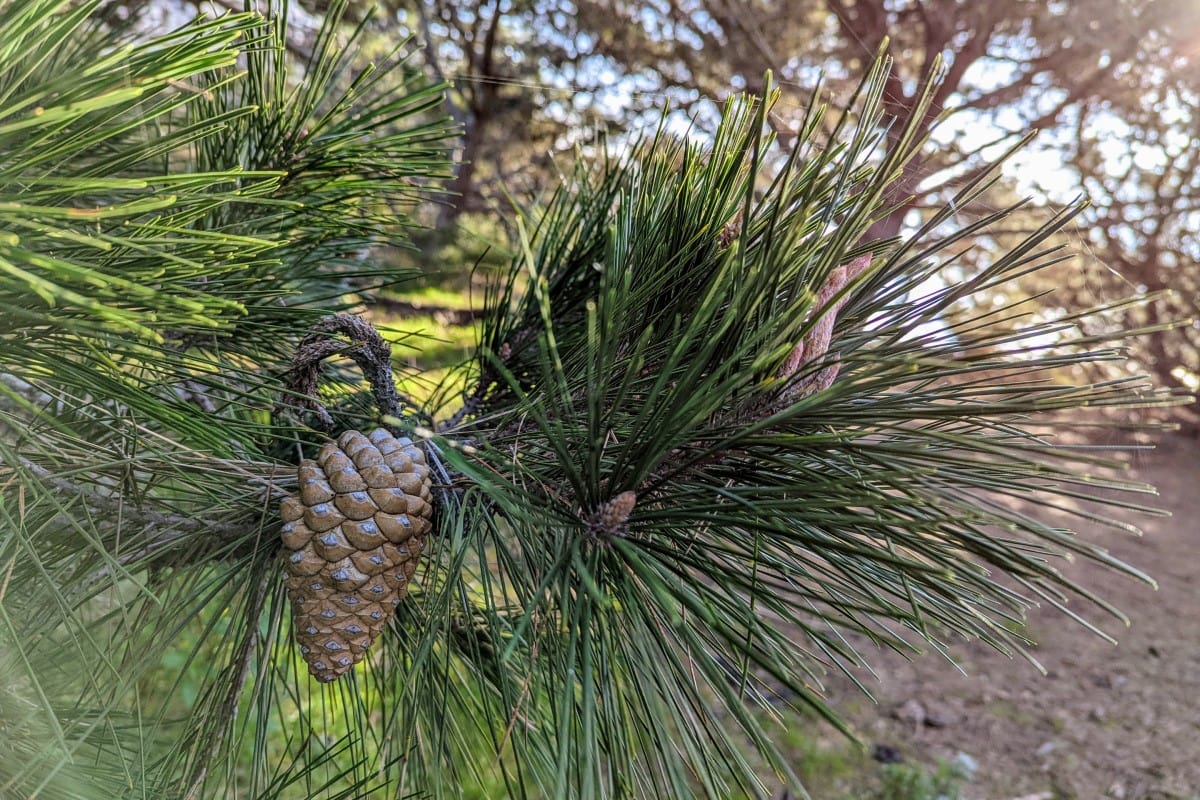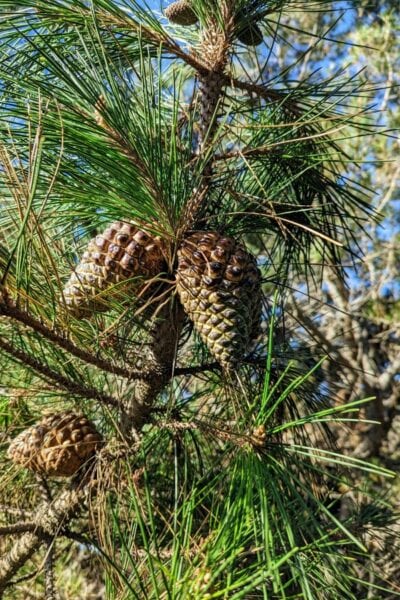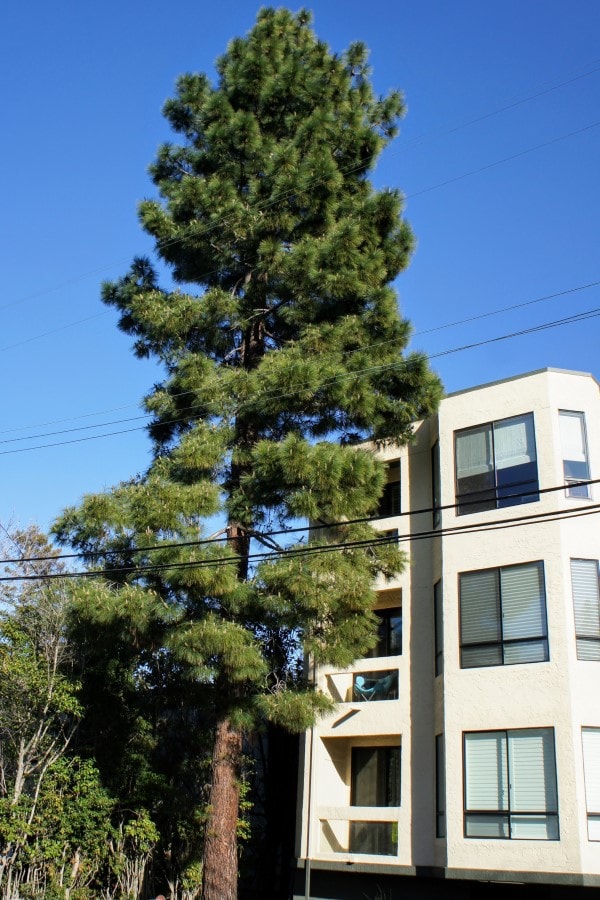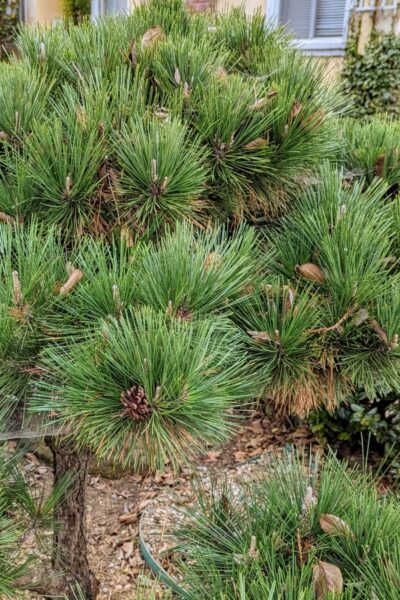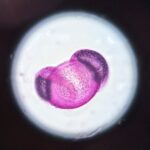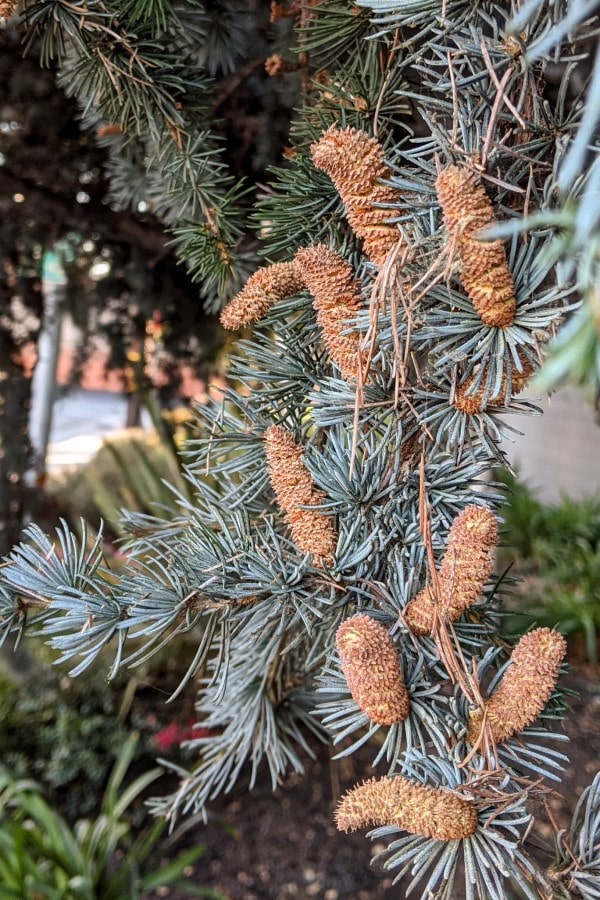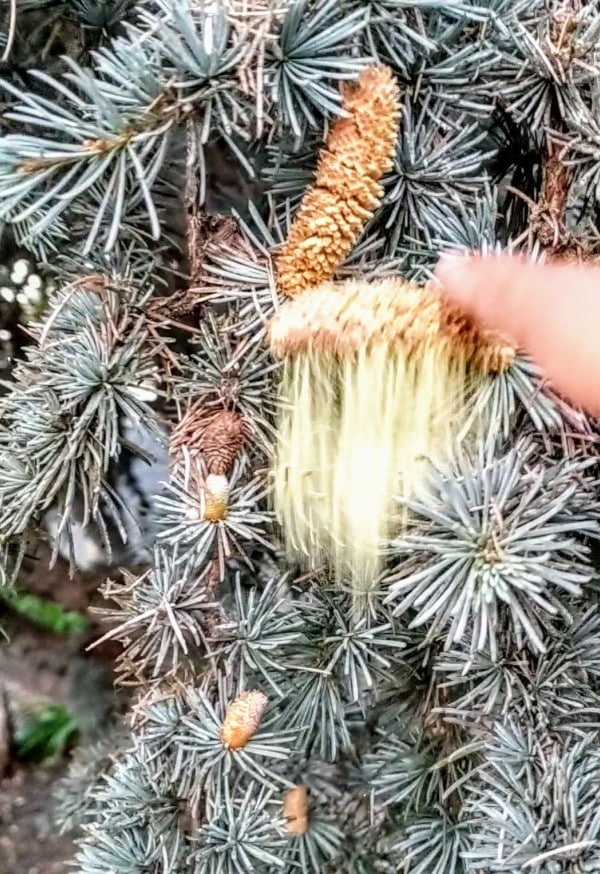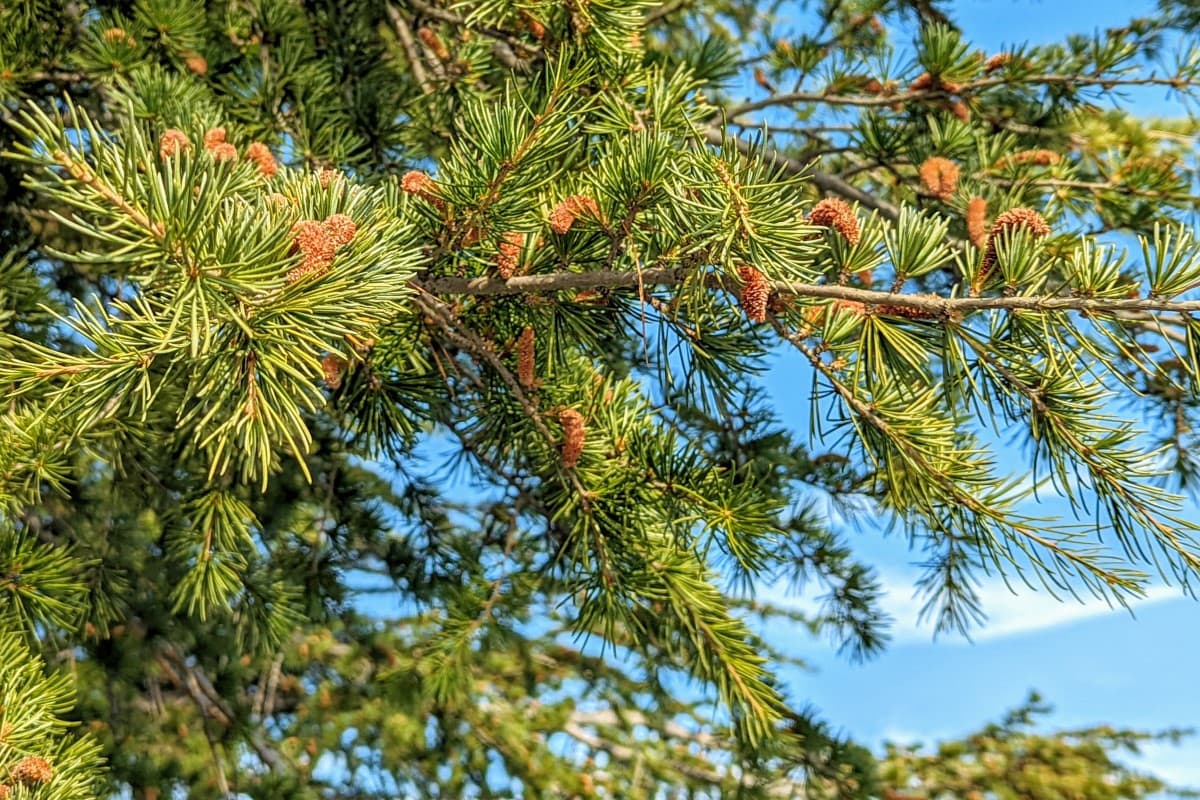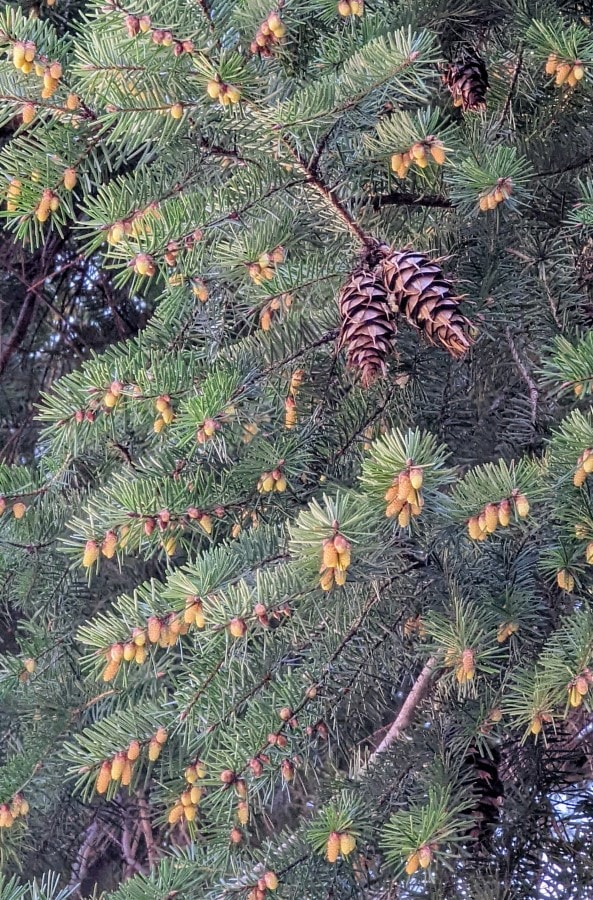In this article, with the help of photos, we will learn about common pine family trees( Family: Pinaceae). Although these conifers release a large amount of airborne pollen, they are generally not implicated in allergies.
Right or wrong, most clinicians in the US do not even test for allergies to the pollen of the pine family. This is why we will keep this article short and sweet!
| Pine family (Family: Pinaceae) | Pollen allergy profile |
|---|---|
| Pollen season | Autumn: Spruce & Deodar Cedars | Spring: Pine & Fir | Winter: Low counts of pollen of various trees of the pine family |
| Pollination type | Wind-pollinated. Most of the pollen collects under the tree, but still, plenty travels with the wind. |
| Cross-reactivity to other pollen | Not known. |
| Pollen source | Male cones. |
| Gender | Monoecious: Separate male and female cones bloom on the same tree. |
| Fruit | Seed cones (see pictures below) |
| Tree size and shape | A wide range of small bushes to large trees. |
Pine (Genus: Pinus, Family: Pinaceae)
Pines are easy to recognize by their large female cones and needles like green leaves. The trees can be small bushes or large trees.
The male cones are generally smaller than the female cones. Their smaller size, however, does not deter them from producing copious yellow pollen during spring.
Pine pollen, although microscopic, is larger than most airborne pollen. As a result, it is often seen on windshields of cars parked nearby in the form of a yellow film.
The pollen of pine, spruce, cedar, and fir looks very similar and is hard to distinguish visually under a microscope. Therefore, my pollen count report labels their pollen under one category “Pine family”.
The pollen of pine, spruce, fir, and cedar look very similar. It is larger than most other airborne pollen. However, despite its larger size, the pollen travels with the wind well with the aid of two air bladders attached to the main body.
Spruce (Genus: Picea, Family: Pinaceae)
The spruce trees have shorter needle-like leaves. When in bloom, they are loaded with small male cones. Although they bloom in autumn and release copious amounts of pollen, our air samplers do not find a lot in the air. As you can see from the picture below, the pollen tends to fall to the ground quickly.
Cedar (Genus: Cedrus, Family: Pinaceae)
Deodar cedars are quite common in the San Francisco Bay Area. They release pollen during autumn.
Fir (Genus: Pseudotsuga, Family: Pinaceae)
Douglas firs are the most notable firs around in the Bay Area. Their female cones are quite photogenic.
Final thoughts
Many decades ago, the scientific community agreed that pollen of the pine family is not an important allergen. As a result, most of the allergy test panels in the US do not even include pine pollen. This is tragic!
Allergy is a constantly evolving ailment. More and more people are being diagnosed with allergies each year. Therefore, in my humble opinion, we should not have completely abandoned testing for pine pollen.
In regions like California, pine pollen is abundantly present in the air for at least five months of the year. It would, therefore, make sense to keep pine pollen in the test panels. Without testing, we can never be sure that the new generations of millennials, Gen X, and Gen Z have not developed allergies to the pine.
Sources
References
- Allergy Plants by Mary Jelks, M.D.
- Plant identification terminology by James G. Harris and Melinda Woolf Harris (Second Edition)
- Sampling and indentifying pollens and Molds by E. Grant Smith
- The trees of golden gate park and San Francisco by Elizabeth McClintock PhD.
All pictures, unless otherwise credited to another source, are taken by the author and are copyrighted material. The pollen picture is taken in our aerobiology lab using an Olympus compound microscope. The use of pictures is permitted with a link back to the source page on the internet, or, an attribution to allerma.com on the printed material.

